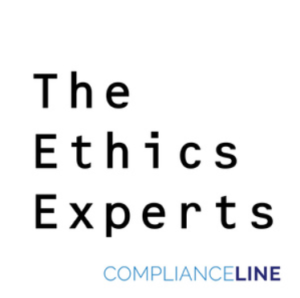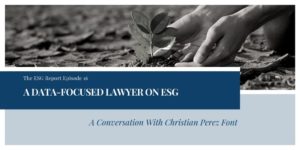The role of the Board of Directors has always been a key part of any best practices compliance program. The Department of Justice (DOJ) and Securities and Exchange Commission (SEC) have consistently said that a Board’s role is active oversight of compliance. Over the past few years, the civil side of this obligation has become much more prominent, led by developments in case law under the Caremark doctrine, as modified by Stone v. Ritter by the Delaware Supreme Court. In response to demands for greater accountability and corporate accountability, the Delaware courts have been cutting back the Caremark standard and rejecting motions to dismiss filed by defendants. Recent cases are continuing down this path and raising the expectations for Board members exercising their duty of loyalty and duty of care. This week I will be exploring this expanded set of legal obligations laid down by the Delaware Supreme Court.
Mike Volkov has stated, “At the core of board member protection from liability is the well-known Caremark doctrine that requires corporate boards to make a good faith effort to implement a system for compliance program monitoring and reporting. For years, Delaware courts easily rebuffed shareholder derivative suits challenging board members’ performance after a corporate scandal occurred. The Caremark standard was reinforced in Stone v. Ritter, where the court stated director oversight liability requires a showing of either “the directors utterly failed to implement any reporting or information system or controls” or the directors, “having implemented such a system or controls, consciously failed to monitor or oversee its operations thus disabling themselves from being informed of risks or problems requiring their attention.”
Under Caremark and Stone v. Ritter, a director must make a good faith effort to oversee the company’s operations. Failing to make that good faith effort breaches the duty of loyalty and can expose a director to liability. But it is more than simply not doing your job as a Board, it is doing so in bad faith. The Court states, “In other words, for a plaintiff to prevail on a Caremark claim, the plaintiff must show that a fiduciary acted in bad faith—“the state of mind traditionally used to define the mindset of a disloyal director.” Bad faith is established, under Caremark, when “the directors [completely] fail[] to implement any reporting or information system or controls[,] or … having implemented such a system or controls, consciously fail[ ] to monitor or oversee its operations thus disabling themselves from being informed of risks or problems requiring their attention.” In short, to satisfy their duty of loyalty, directors must make a good faith effort to implement an oversight system and then monitor it.”
This change began in a case Marchand v. Barnhill and it involved that Texas institution, Blue Bell Ice Cream, the top ice cream manufacturer in the US. In this decision, the Court found that the Blue Bell Board completely abrogated its duty around the single largest safety issues it faced – food safety. That abrogation allowed a listeria outbreak, “causing the company to recall all of its products, shut down production at all of its plants, and lay off over a third of its workforce. Blue Bell’s failure to contain listeria’s spread in its manufacturing plants caused listeria to be present in its products and had sad consequences. Three people died as a result of the listeria outbreak. Less consequentially, but nonetheless important for this litigation, stockholders also suffered losses because, after the operational shutdown, Blue Bell suffered a liquidity crisis that forced it to accept a dilutive private equity investment.”
The job of every Board member is to represent the shareholders, not the incumbent Chief Executive Officer (CEO) and Chairman of the Board. To do so, the Board must oversee the risk management function of the organization. Blue Bell was and to this day is a single-product food company and that food is ice cream. This sole source of income would mandate that the highest risk the company might face is around food. But as the underlying compliant noted, “despite the critical nature of food safety for Blue Bell’s continued success, the complaint alleges that management turned a blind eye to red and yellow flags that were waved in front of it by regulators and its own tests, and the board—by failing to implement any system to monitor the company’s food safety compliance programs—was unaware of any problems until it was too late.”
The plaintiffs reviewed the Board records and made the following allegations:
- there was no Board committee that addressed food safety;
- there was no regular process or protocols that required management to keep the Board apprised of food safety compliance practices, risks, or reports which existed;
- there was no schedule for the Board to consider on a regular basis, such as quarterly or biannually, any key food safety risks which existed;
- during a key period leading up to the deaths of three customers, management received reports that contained what could be considered red, or at least yellow, flags, and the Board minutes of the relevant period revealed no evidence that these were disclosed to the Board;
- the Board was given certain favorable information about food safety by management, but was not given important reports that presented a much different picture; and
- the Board meetings are devoid of any suggestion that there was any regular discussion of food safety issues.
The Board’s response to these allegations is instrumental in understanding how Board’s viewed their obligations regarding oversight of compliance. The Court stated, “the directors largely point out that by law Blue Bell had to meet FDA and state regulatory requirements for food safety, and that the company had in place certain manuals for employees regarding safety practices and commissioned audits from time to time. In the same vein, the directors emphasize that the government regularly inspected Blue Bell’s facilities, and Blue Bell management got the results.”
The Delaware Supreme Court made short shrift of this argument, stating “fact that Blue Bell nominally complied with FDA regulations does not imply that the board implemented a system to monitor food safety at the board level. Indeed, these types of routine regulatory requirements, although important, are not typically directed at the board. At best, Blue Bell’s compliance with these requirements shows only that management was following, in a nominal way, certain standard requirements of state and federal law. It does not rationally suggest that the board implemented a reporting system to monitor food safety or Blue Bell’s operational performance.”
The Board’s next defense was even more inane and was so preposterous, the Delaware Supreme Court labeled it as “telling.” It was that because the Board had received information on the company’s operational issues and performed oversight on operational issues, it had fulfilled its Caremark obligations. This is basically the same argument that every paper-pushing argument for compliance program. We have something on paper, so we have complied is the clarion call of such practitioners. The Delaware Supreme Court also saw through the flimsiness of this argument stating, “if that were the case, then Caremark would be a chimera.” [emphasis in original] This is because operational issues are always discussed at the Board level. Finally, Caremark requires “that a board make a good faith effort to put in place a reasonable system of monitoring and reporting about the corporation’s central compliance risks. In Blue Bell’s case, food safety was essential and mission critical.”
It has long been axiomatic that bad facts can lead to large changes in how courts interpret the law. The Blue Bell case had facts that the Court all but said the Board engaged in bad faith regarding its compliance obligations. The change was only the beginning.







